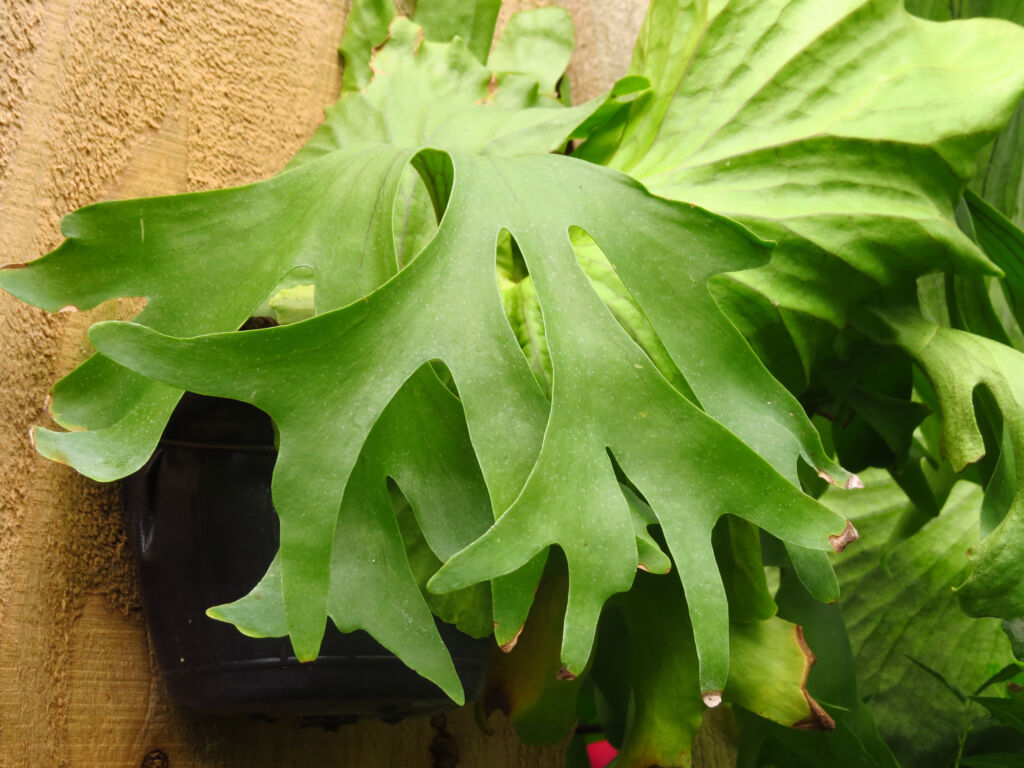HousePlantJoy is supported by our audience. When you purchase through one of our links, we may earn a small affiliate commission. As an Amazon Associate I earn from qualifying purchases. Your cost is not affected.
==================
People Love The Staghorn Fern Plant
Describing The Staghorn Fern Plant
Staghorn Fern Plant Requirements
Propagating The Staghorn Fern Plant
Mounting The Staghorn Fern Plant
The Staghorn Fern by Zoo Med provides a crucial addition to any Staghorn Fern plant collection, offering unique features that enhance the beauty and well-being of these plants in home environments.
The Basswood by Walnut Hollow is a vital accessory for Staghorn Fern plants in home settings, offering exceptional quality and functionality to enhance their growth and aesthetics.
The Wooden Orchid Planter Frame Display provides a crucial element for showcasing and supporting Staghorn Fern plants in home environments, elevating their visual appeal and creating a captivating display.
The Diversified Vintage Large Cabinet & Wall-Mounted Basket for Storage offers a vital storage solution for Staghorn Fern plants in home settings, allowing you to keep their essential tools and supplies organized and readily accessible while adding a touch of vintage charm to your space.
Benefits Of Having The Elkhorn Fern
More Platycerium Plant Care Tips
In Conclusion
FAQs
How do I care for a Staghorn Fern?
Staghorn Ferns have specific care requirements. They prefer bright, indirect light, so placing them near a window with filtered sunlight is ideal. They also thrive in a humid environment, so misting the fronds regularly or placing a tray of water nearby can help maintain humidity levels. Additionally, these ferns should be watered thoroughly but allowed to dry out slightly between waterings. Mounting the fern on a wooden board or hanging it in a basket is a common practice and provides the plant with the necessary support.
How often should I fertilize my Staghorn Fern?
Staghorn Ferns are not heavy feeders, but they can benefit from occasional fertilization. During the growing season, which typically occurs in spring and summer, you can use a diluted balanced liquid fertilizer once a month or follow the product instructions. However, it’s essential not to over-fertilize, as it can lead to salt build-up and harm the plant.
Can I place a Staghorn Fern in my bathroom as a houseplant?
Absolutely! Staghorn Ferns can thrive in a bathroom environment, making them an excellent choice for adding greenery to your bathroom decor. They have a natural affinity for high humidity, which is often present in bathrooms due to showers and baths. The fern’s ability to tolerate moisture and its unique frond structure make it a stunning and low-maintenance option for bathroom plants. Just ensure that the bathroom receives adequate indirect light, and mist the fronds occasionally to maintain humidity levels. Mounting the Staghorn Fern on a wooden board or hanging it in a basket can add a beautiful touch to your bathroom walls while providing the fern with the necessary support.
Can I place my Staghorn Fern outdoors?
Staghorn Ferns can be placed outdoors in suitable climates, such as tropical or subtropical regions, where they can thrive in natural conditions that resemble their native habitat. If you live in a climate with warm temperatures, high humidity, and indirect sunlight, you can definitely place your Staghorn Fern outdoors. These ferns can be mounted on trees, walls, or grown in hanging baskets, adding a unique and eye-catching element to your outdoor space. Just make sure to protect them from direct sunlight, strong winds, and extreme temperatures, as they are sensitive to such conditions. Regularly monitor the moisture levels in the fern’s mounting material and water accordingly to keep it hydrated. By providing a suitable outdoor environment, you can enjoy the full beauty of your Staghorn Fern while allowing it to flourish.
What is the best temperature range for Staghorn Ferns?
Staghorn Ferns prefer temperatures ranging from 60°F to 80°F (15°C to 27°C). They are sensitive to extreme cold or heat, so it’s important to keep them away from drafts, air conditioning vents, and direct exposure to heaters or radiators. Maintaining a moderate and consistent temperature is key to their well-being.






